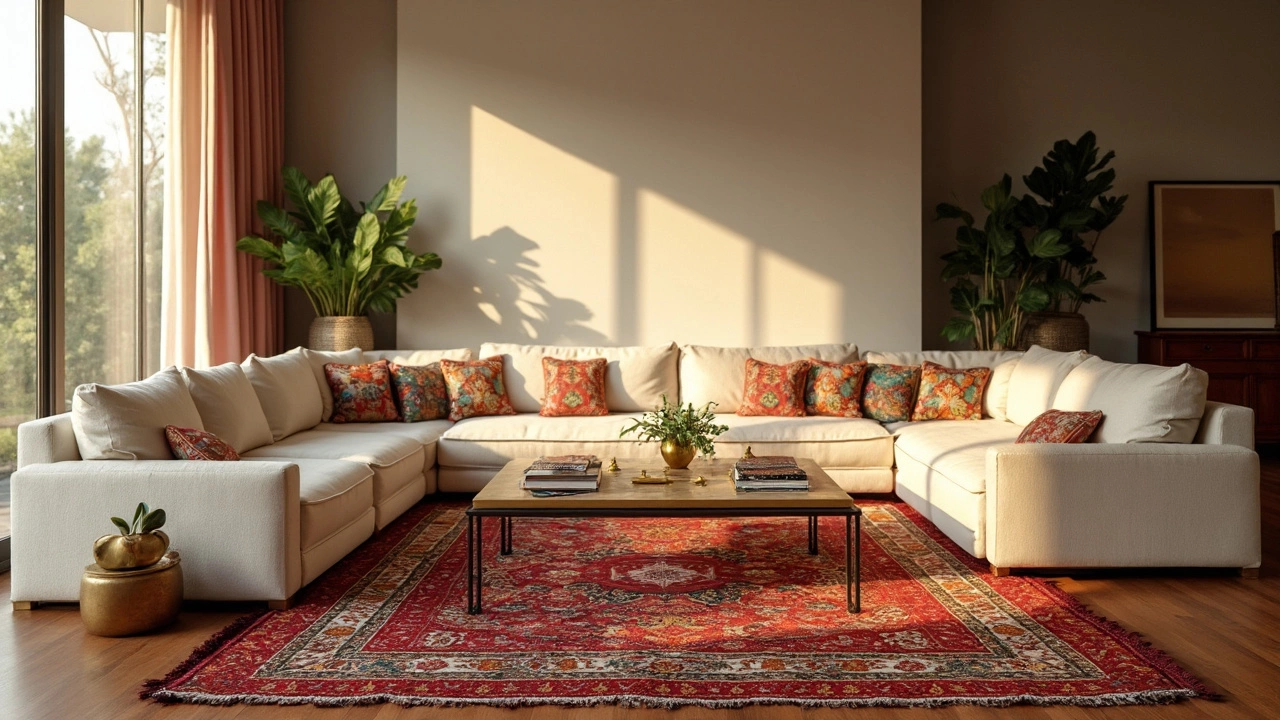Rug Size: How to Pick the Perfect Dimensions for Your Space
Choosing the right rug size feels a bit like solving a puzzle – you want it big enough to anchor the room but not so large it overwhelms the furniture. The good news is you don’t need a PhD in interior design to get it right. Just follow a few simple steps, measure carefully, and use the standard size chart as a shortcut.
Measure Your Room and Furniture Layout
Start by walking around the area where you plan to place the rug. Grab a tape measure and note the length and width of the floor space. Next, look at how your main pieces of furniture sit. In a living room, the rug usually sits under the front legs of the sofa and chairs. In a bedroom, the rug should be big enough to sit comfortably on both sides of the bed.
Here’s a quick rule of thumb: leave at least 18–24 inches of bare floor around the rug’s edge. That breathing room makes the space feel balanced. If you have a small room, a slightly larger margin (up to 30 inches) can keep the room from feeling cramped.
If you’re dealing with a sectional sofa, measure the distance between the outer edges of the sectional and any adjacent chairs or side tables. Place the rug so that the front legs of every seating piece sit on the rug, but the back legs can stay off. This arrangement ties the furniture together without looking like a carpet is trying to hug everything at once.
Standard Rug Size Recommendations
Most retailers stick to a handful of common sizes. Knowing these can speed up your decision:
- 5'×8' – Ideal for medium‑sized living rooms, placed under a sofa and two chairs.
- 8'×10' – Works well in larger living rooms or open‑plan spaces, covering most of the seating area.
- 6'×9' – Good for dining rooms that seat six people; the rug should extend at least 24 inches beyond each side of the table.
- 2'×3' – Perfect for entryways, kitchens, or as a runner beside a bench.
- 9'×12' – Best for expansive rooms with multiple seating groups or a grand dining table.
If none of these fit perfectly, don’t panic. Custom rugs are an option, but you can also combine two smaller rugs in a symmetrical layout. Just make sure the seams line up and the styles match.
Shape matters too. Round rugs are great under round coffee tables or in cozy corners, while rectangular rugs work with most sofas and beds. A square rug can anchor a square dining table and keep everything looking tidy.
Finally, think about the rug’s pile and pattern. Low‑pile rugs show less wear in high‑traffic zones, while a busy pattern can hide dirt and pet hair. Light‑colored rugs make a room feel larger; dark rugs add drama and ground the space.
By measuring, checking furniture placement, and referencing the standard size chart, you’ll land on a rug that feels just right. No more guessing, no more costly returns – just a rug that ties your room together and makes it feel like home.
What Size Rug Goes Under a Couch? Tips for Perfect Placement
Figuring out the right rug size to place under your couch can be a game-changer for your living space. The perfect rug does more than just fill a spot on the floor; it ties the room together, accentuates furniture, and adds warmth. Choose a rug that complements your room's layout and matches your sofa. Consider the rug's material, style, and practicality in addition to size.
View More




